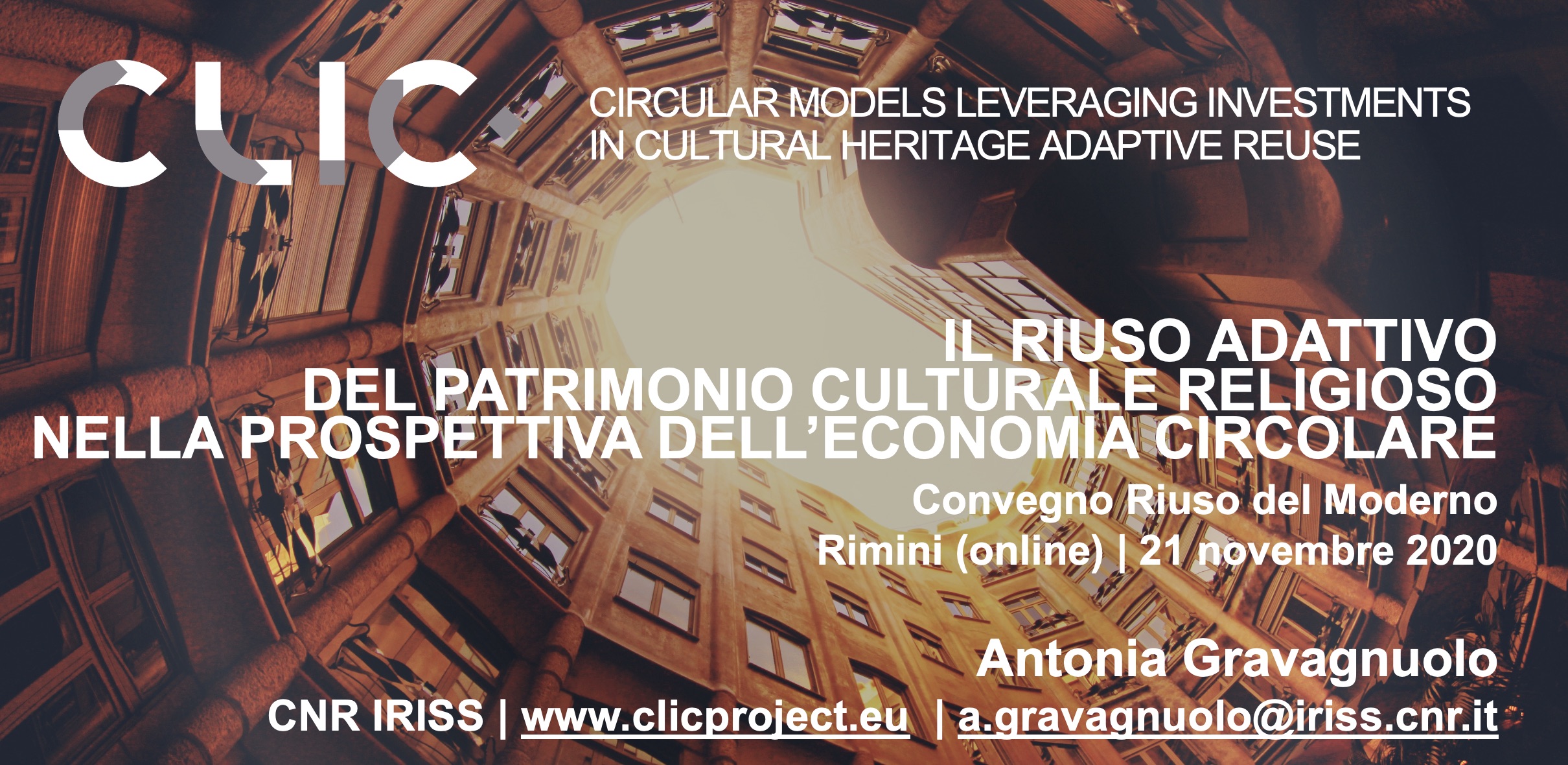
21Nov
CLIC Participation to the seminars “Riuso del Moderno, 2. Rimini – Dismissione e riuso dei luoghi di culto”
The Rimini Province Order of Architects PPC organised a major event dedicated to the Reuse of the Modern with seminars scheduled between 14 November and 12 December 2020, with the aim of stimulating and raising awareness of the culture of recovering the architectural heritage to initiate shared and participatory transformation processes within communities.
Specifically, on 21 November an online meeting was held, with an entire session dedicated to the “decommissioning and reusing places of worship”. The theme aimed to identify the “criticality” of ecclesial places/spaces, with particular reference to monastic complexes, as important resources for communities. This can only take place through their concrete identification, in order to then identify those transformation processes capable of re-integrating them into the living fabric of the territories and the city. For this reason, the comparison between different project experiences was fundamental.
The focus of the event was the comparison of experiences in the reuse of religious heritage, with the participation of Olimpia Niglio (Hokkaido University), who presented the work of the ICOMOS international scientific committee and intercultural diplomacy and the initiative of the international scientific committee on Places of Religion and Ritual.
In the same session, Luigi Bartolomei (University of Bologna) gave a speech focused on the theme of “Tradere”: the project of new scenarios for the cultural heritage of religious bodies, with an in-depth examination of the working theme of the project of reuse of a convent complex realised within the Lucca Summer School.
Antonia Gravagnuolo of the CNR-IRISS in Naples presented the research work carried out within the framework of the Horizon 2020 CLIC European research and innovation project, on “Evolutionary processes in the reuse of religious cultural heritage”, stimulating the debate on the value of cultural heritage and on “circular” and regenerative experiences of reuse of religious heritage, with an in-depth focus on the case study of the Catacombs of San Gennaro in Naples.
